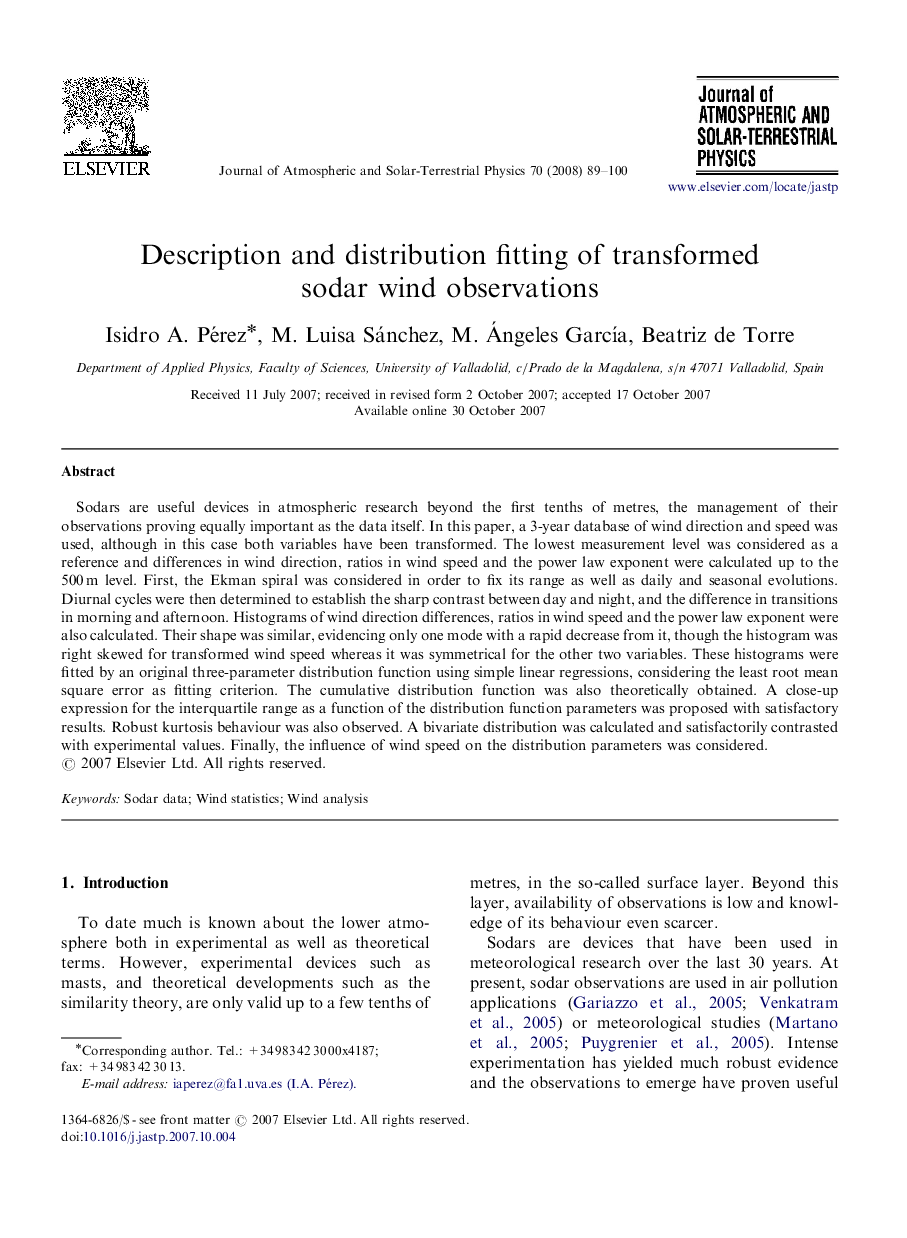| Article ID | Journal | Published Year | Pages | File Type |
|---|---|---|---|---|
| 1778269 | Journal of Atmospheric and Solar-Terrestrial Physics | 2008 | 12 Pages |
Sodars are useful devices in atmospheric research beyond the first tenths of metres, the management of their observations proving equally important as the data itself. In this paper, a 3-year database of wind direction and speed was used, although in this case both variables have been transformed. The lowest measurement level was considered as a reference and differences in wind direction, ratios in wind speed and the power law exponent were calculated up to the 500 m level. First, the Ekman spiral was considered in order to fix its range as well as daily and seasonal evolutions. Diurnal cycles were then determined to establish the sharp contrast between day and night, and the difference in transitions in morning and afternoon. Histograms of wind direction differences, ratios in wind speed and the power law exponent were also calculated. Their shape was similar, evidencing only one mode with a rapid decrease from it, though the histogram was right skewed for transformed wind speed whereas it was symmetrical for the other two variables. These histograms were fitted by an original three-parameter distribution function using simple linear regressions, considering the least root mean square error as fitting criterion. The cumulative distribution function was also theoretically obtained. A close-up expression for the interquartile range as a function of the distribution function parameters was proposed with satisfactory results. Robust kurtosis behaviour was also observed. A bivariate distribution was calculated and satisfactorily contrasted with experimental values. Finally, the influence of wind speed on the distribution parameters was considered.
